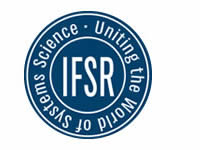IFSR Newsletter 1997 Vol. 16 No. 3 November
Robert Trappl, Paolo Petta (eds.)
Progress in computer animation has gained so much in a speed that, before long, computer generated human faces and figures on screen will be indistinguishable from those of real humans. The potential both for scripted films and real-time interaction with users is enormous. However, in order to cope with this potential, these faces and figures must be guided by autonomous personality agents.
This carefully arranged volume presents the state of the art in research and development in making synthetic actors more autonomous. The papers describe the different approaches and solutions developed by computer animation specialists, computer scientists, experts in AI, psychologists and philosophers, from leading laboratories world-wide. A bibliography of more that 200 entries, mostly annotated, and URLs to relevant institutions, enable further study.
Contents:
P. Petta, R. Trappl: Why to Create personalities for Synthetic Actors?
N. Magnenat, Thalmann, P. Volino: Dressing Virtual Humans
D. Thalmann, H. Noser, Z. Huang: Autonomous Virtual Actors Based on Virtual Sensors
N.I. Badler, B.D. Reich, B. L. Webber: Towards Personalities for Animated Agents with Reactive and planning Behaviors
N. Goldberg, IMPROV: A System for Real-Time Animation of Behavior-Based Synthetic Actors
B. Blumberg, T. Galyean: Multi-level Control for Animated Autonomous Agents: Dothe Right Thing… Oh. Not That…
D. Blair, T. Meyer: Tools for an Interactive Virtual Cinema
B. Hayes-Roth, R. van Gent, D. Huber: Acting in Character
A.B. Loyall: Some Requirements and Approaches for Natural Language in a Believable Agent
D. Moffat: Personality Parameters and Programs
A. Sloman: What Sort of Control Systems Is able to have a Personality?
P. Petta, R. Trappl: Personalities for Synthetic Actors: Current Issues and Some Perspectives
Springer-Verlag 1997, ISBN: 3-540-62735-9
260 Pages, DM 66.00, US$ 49.00
